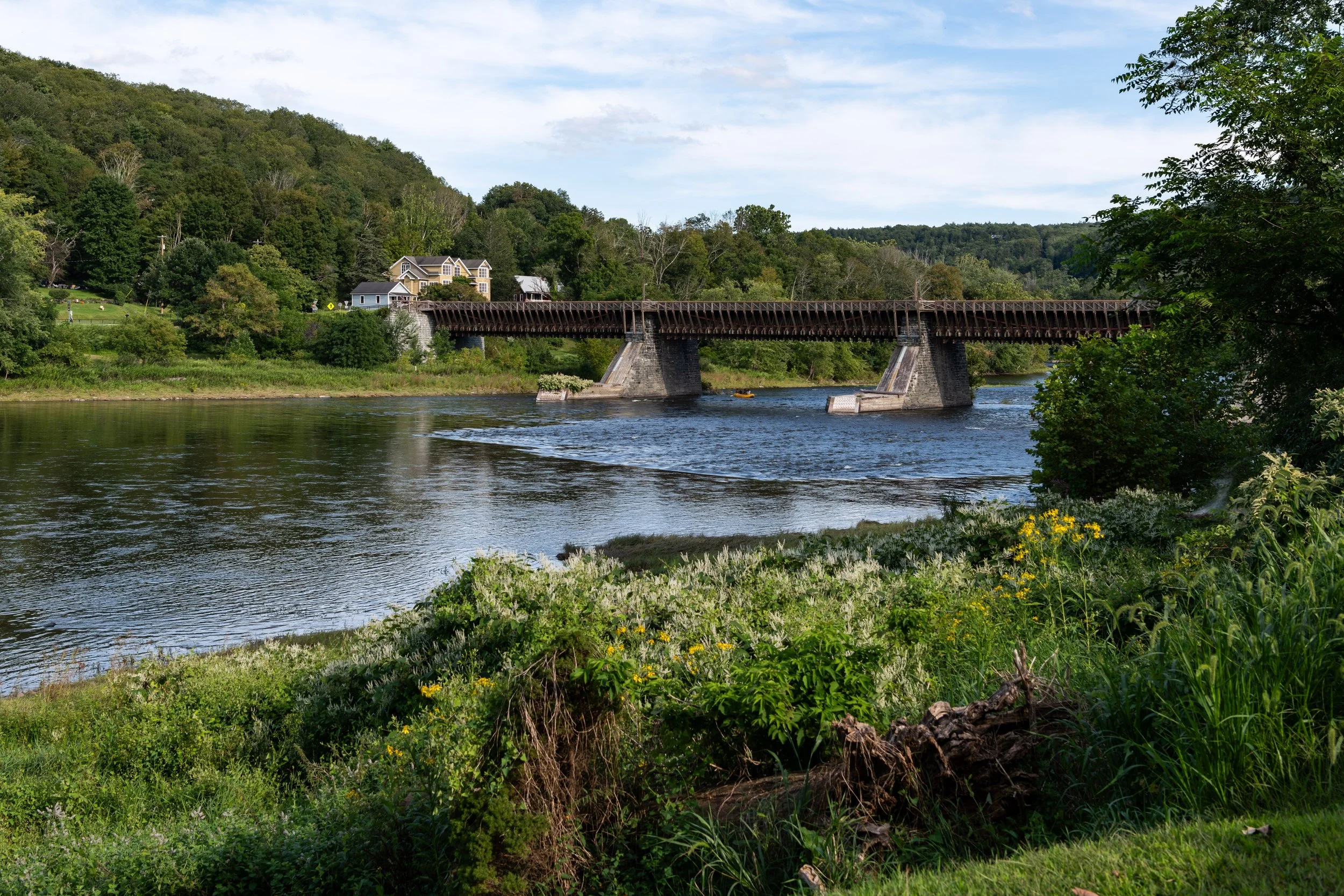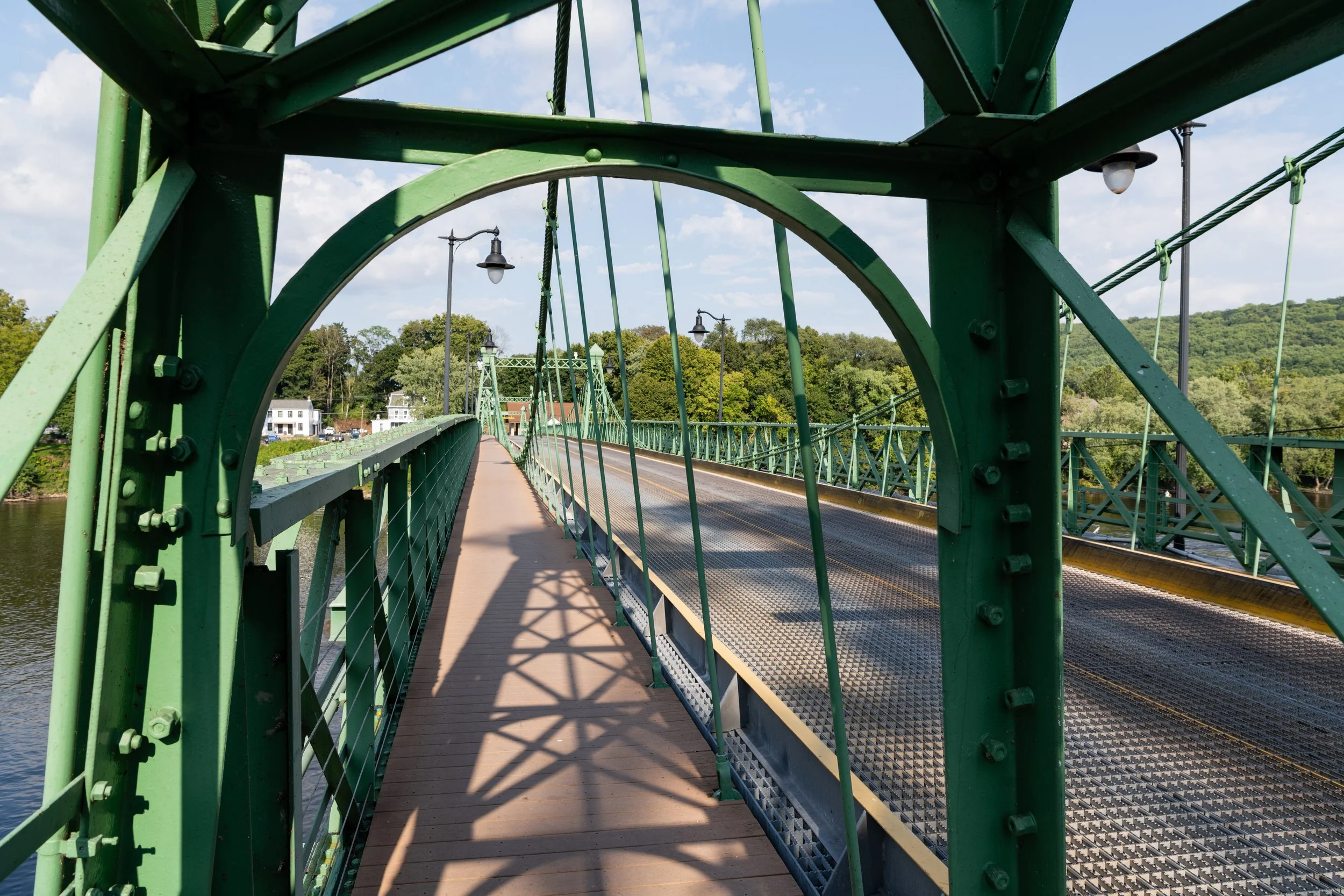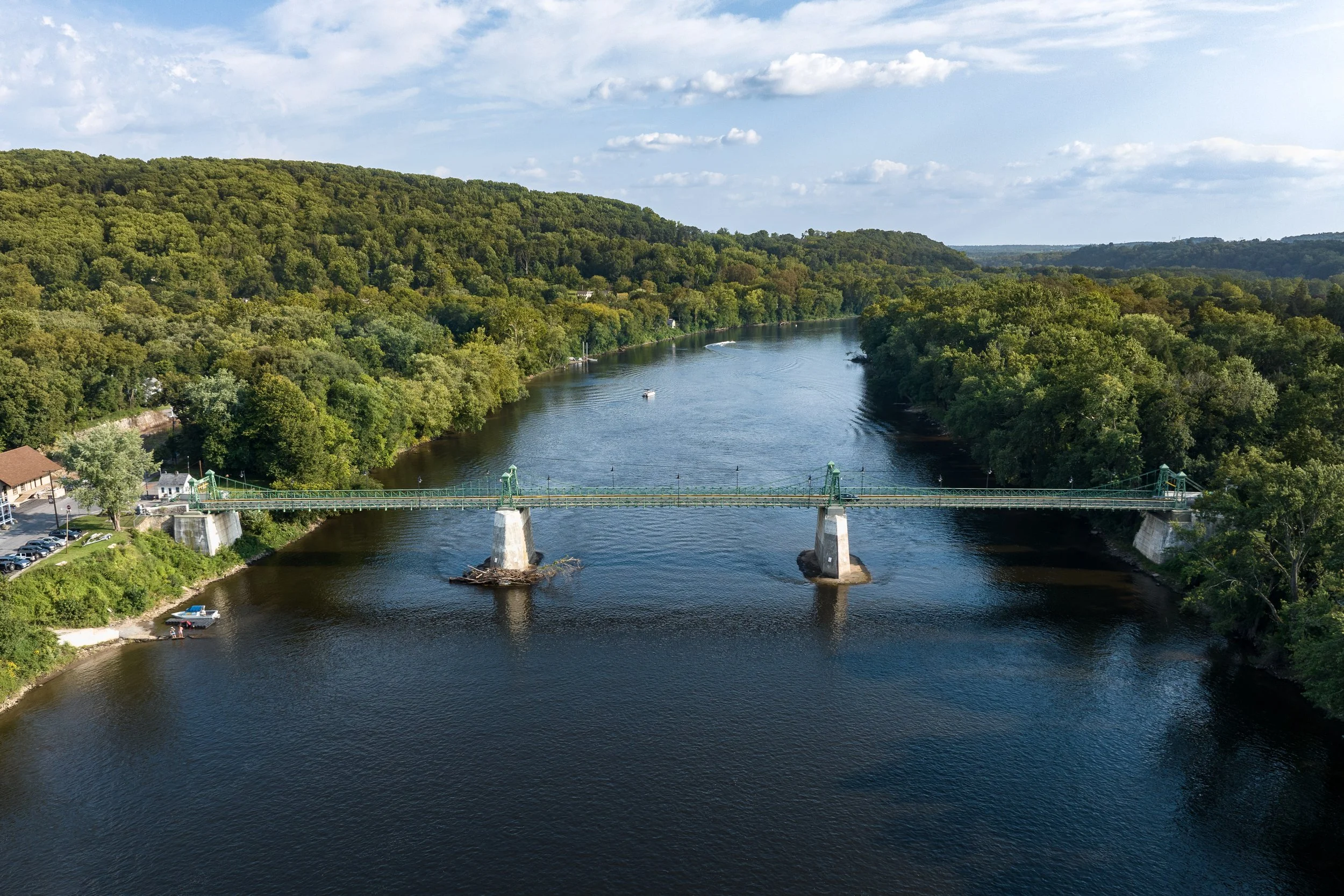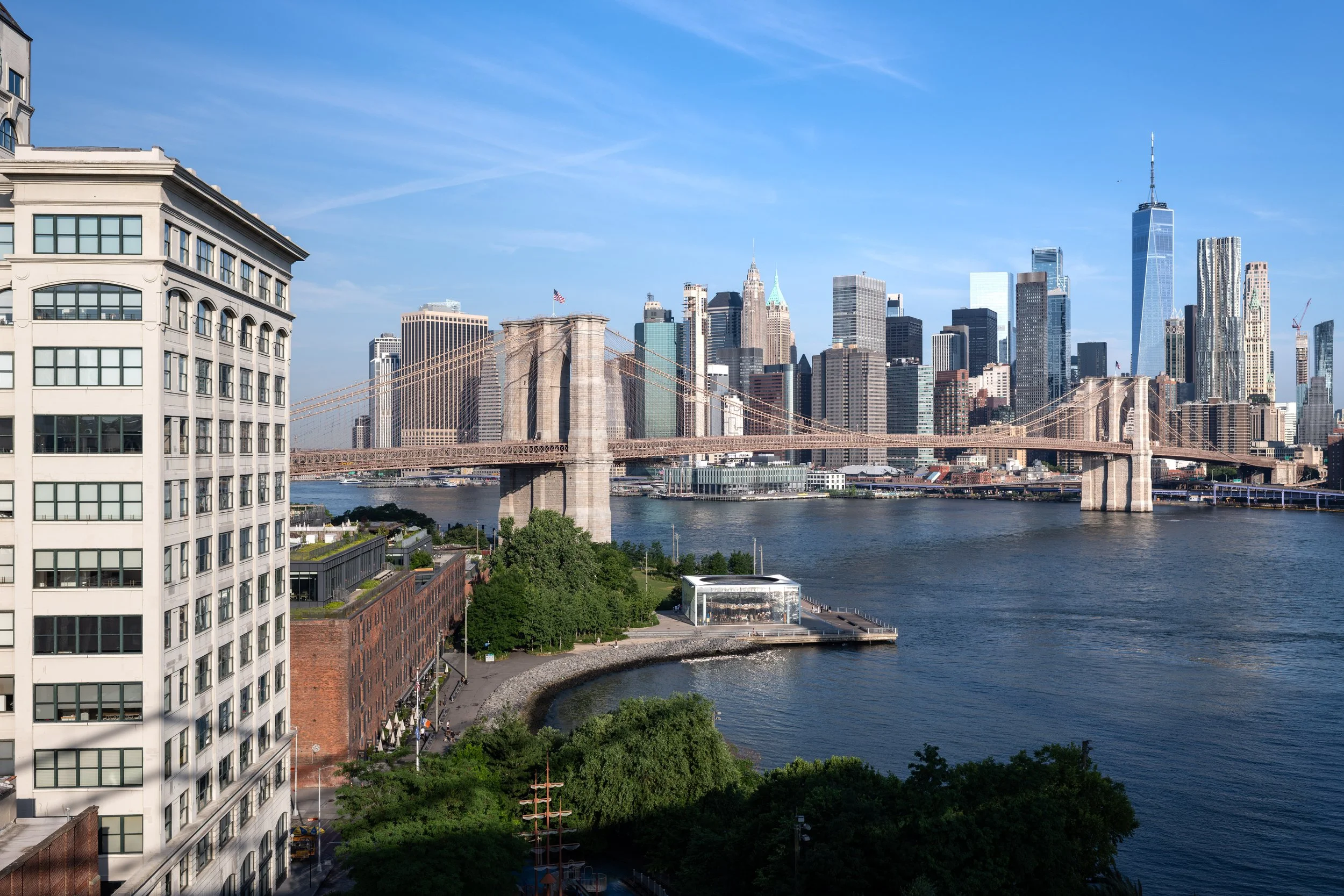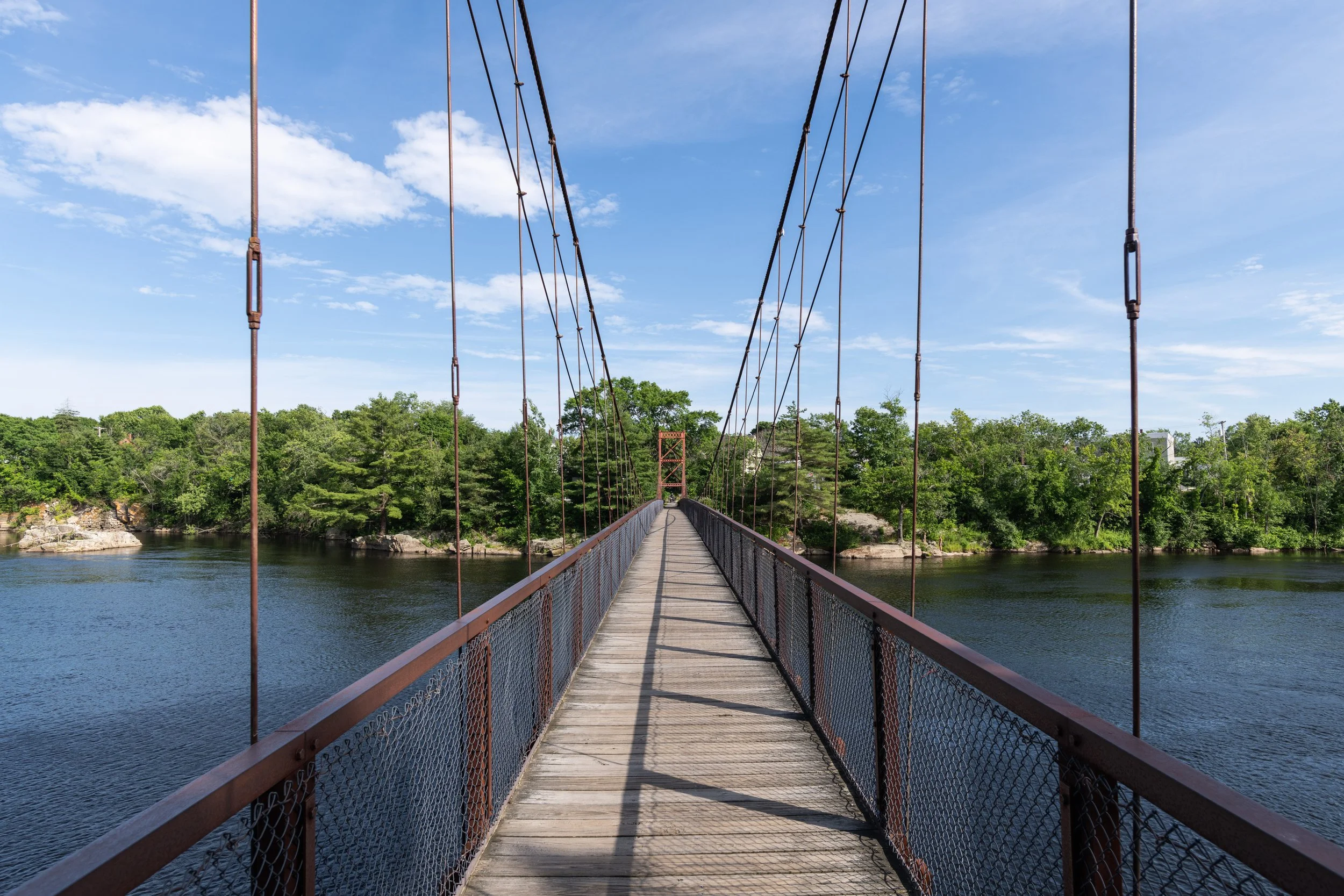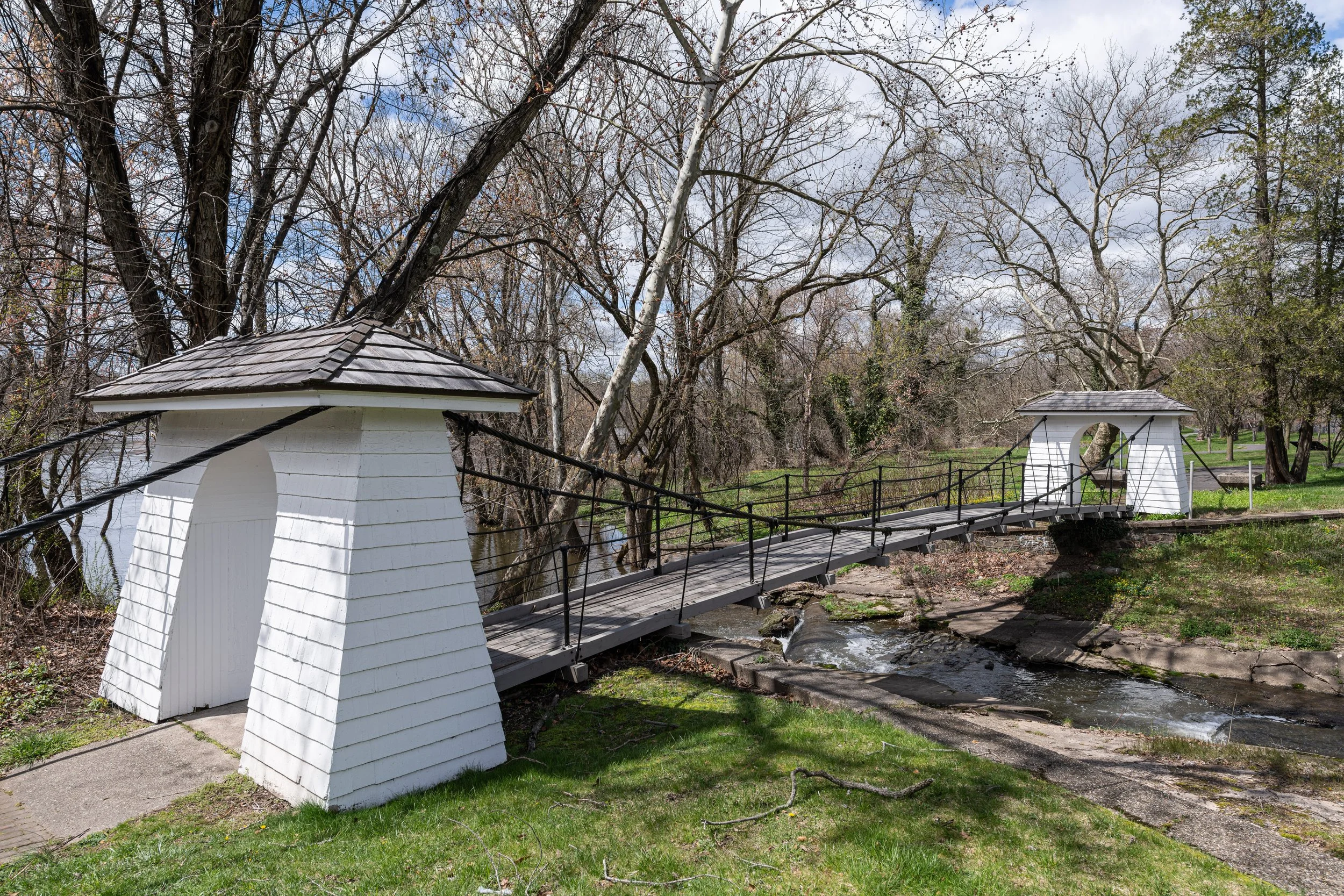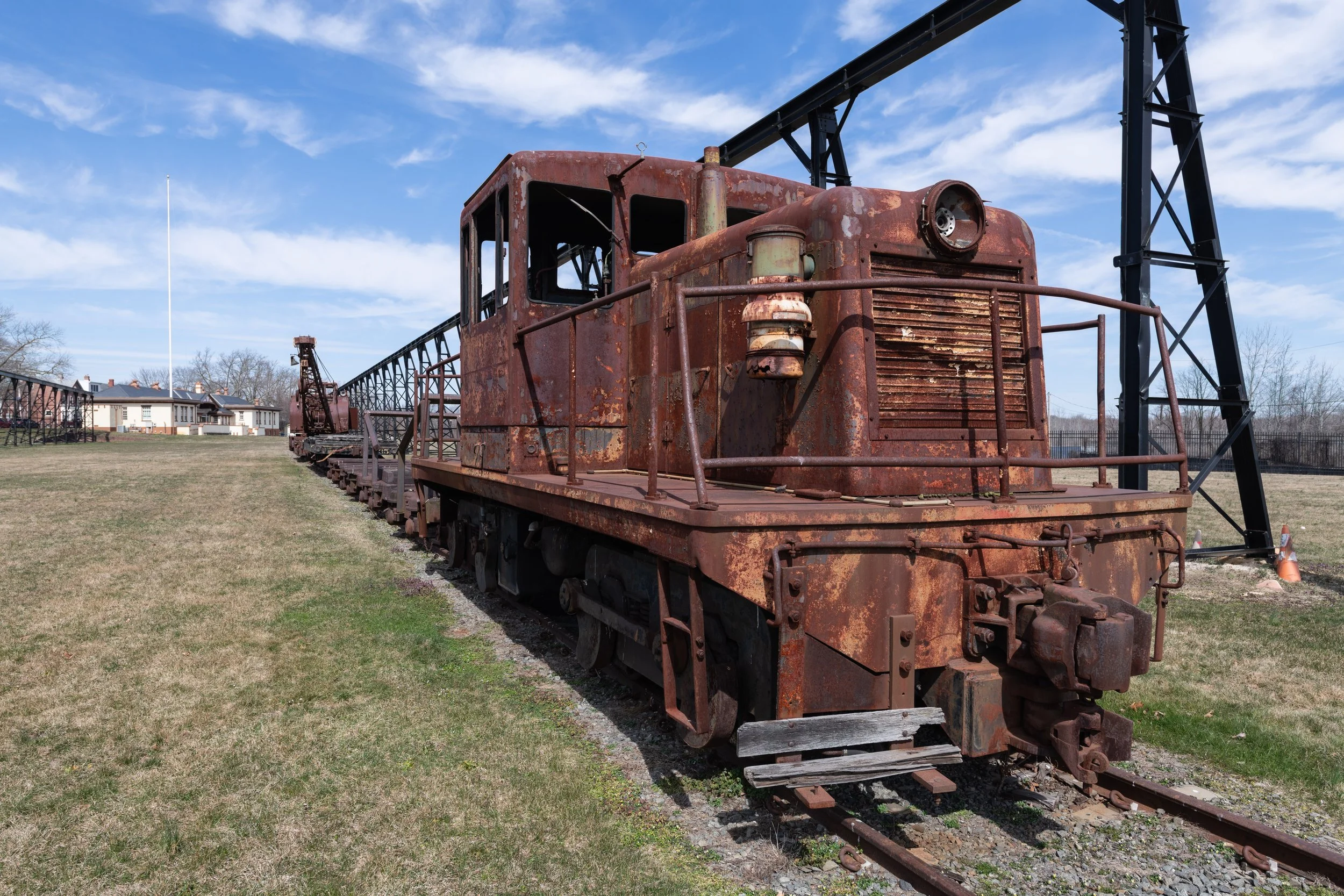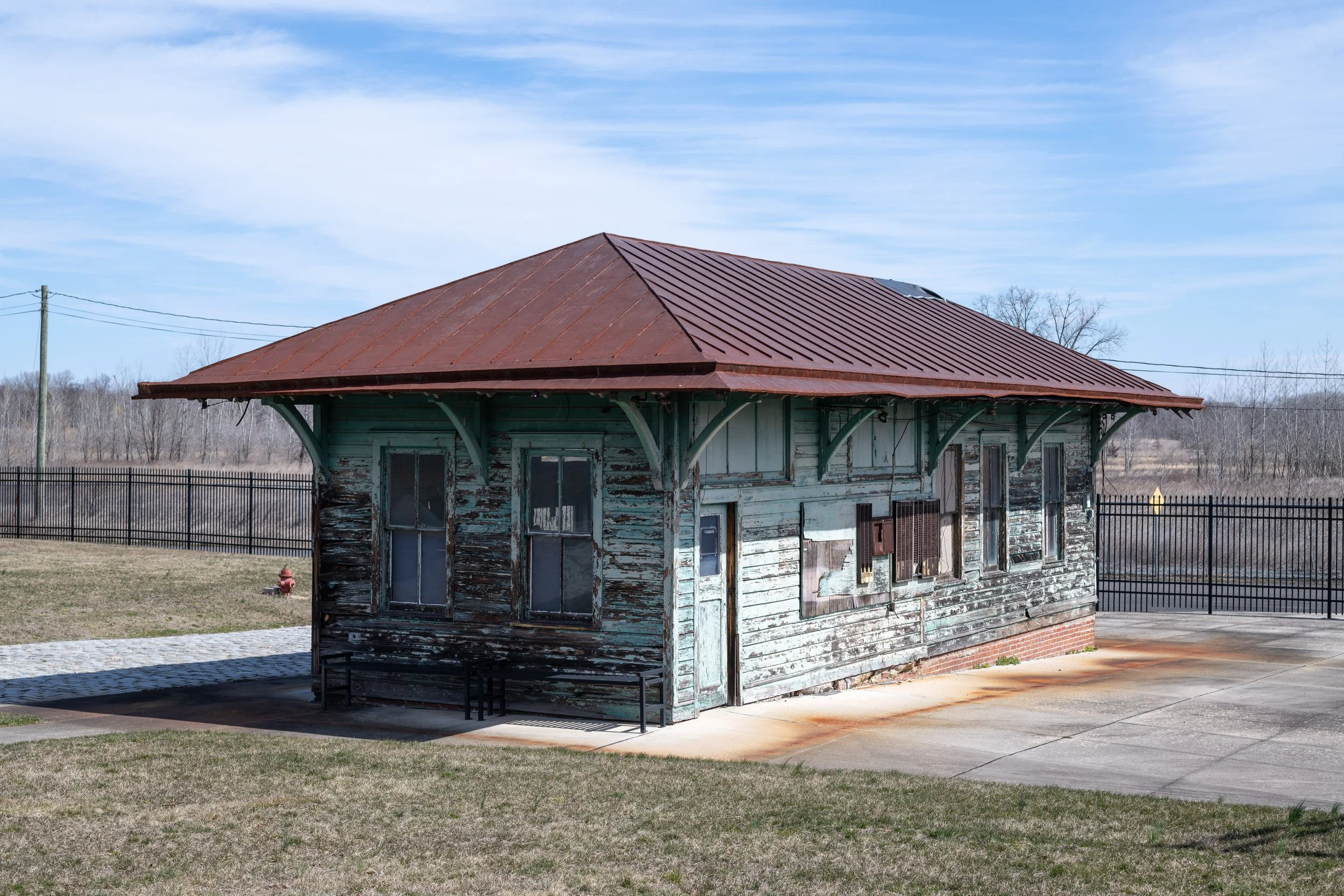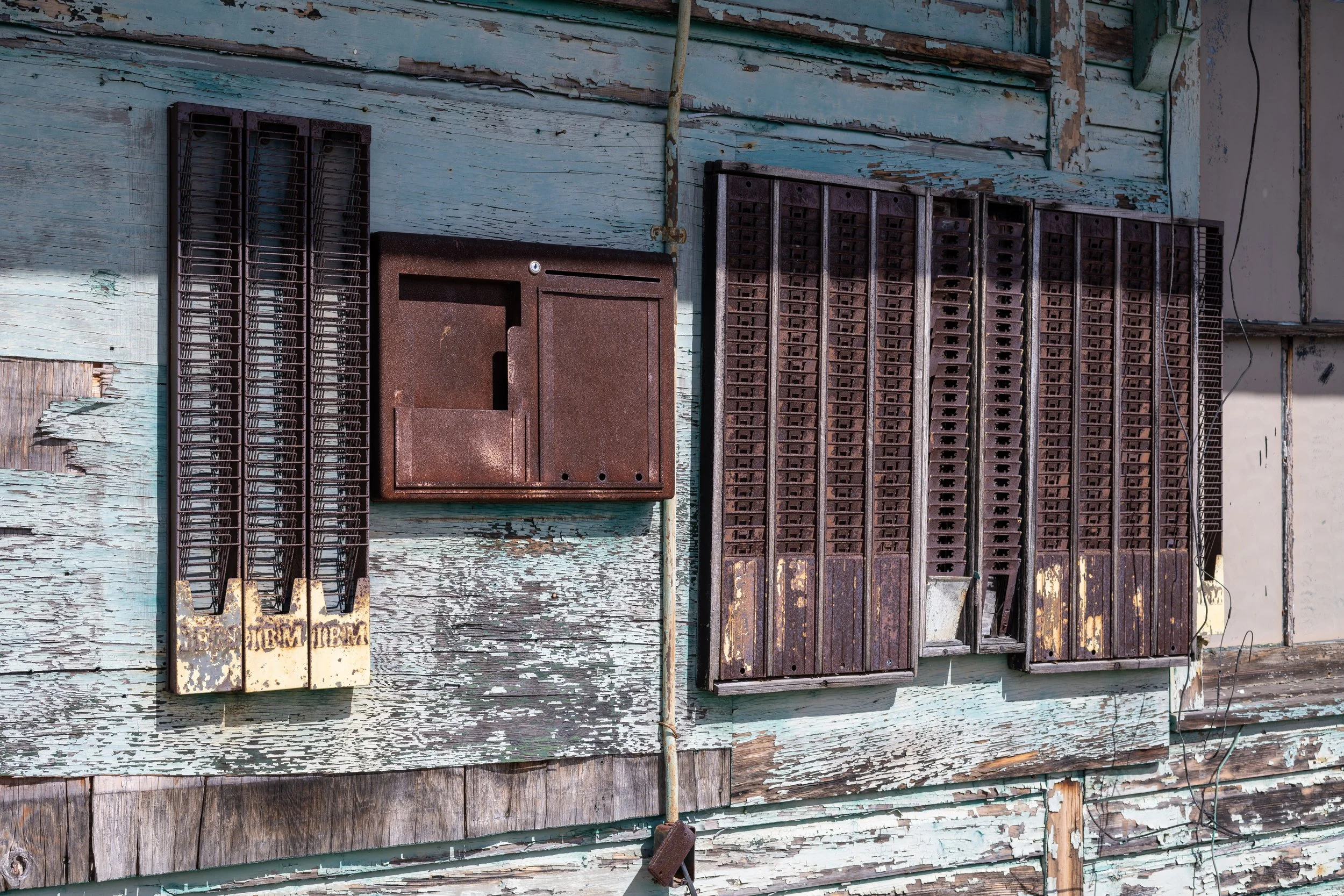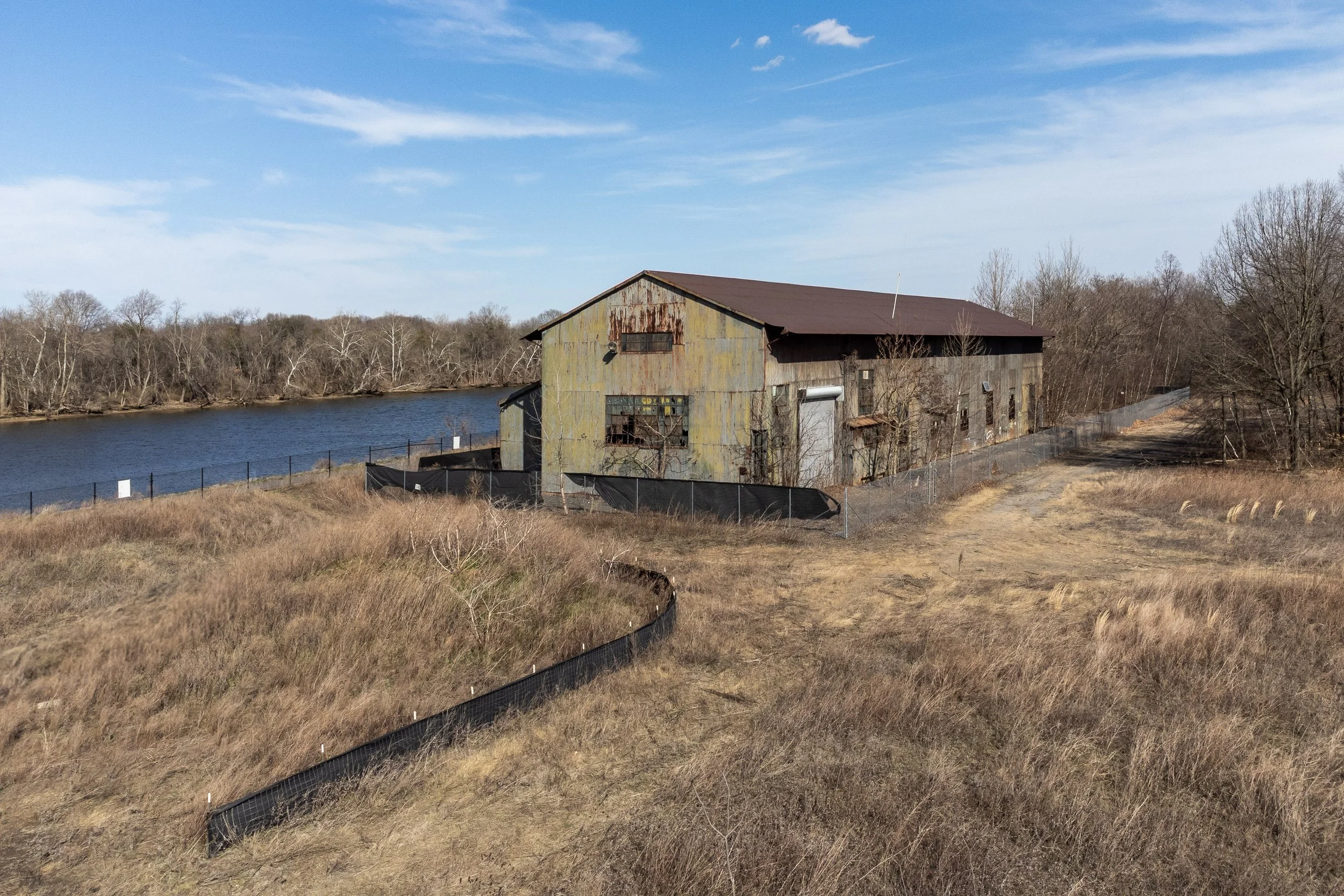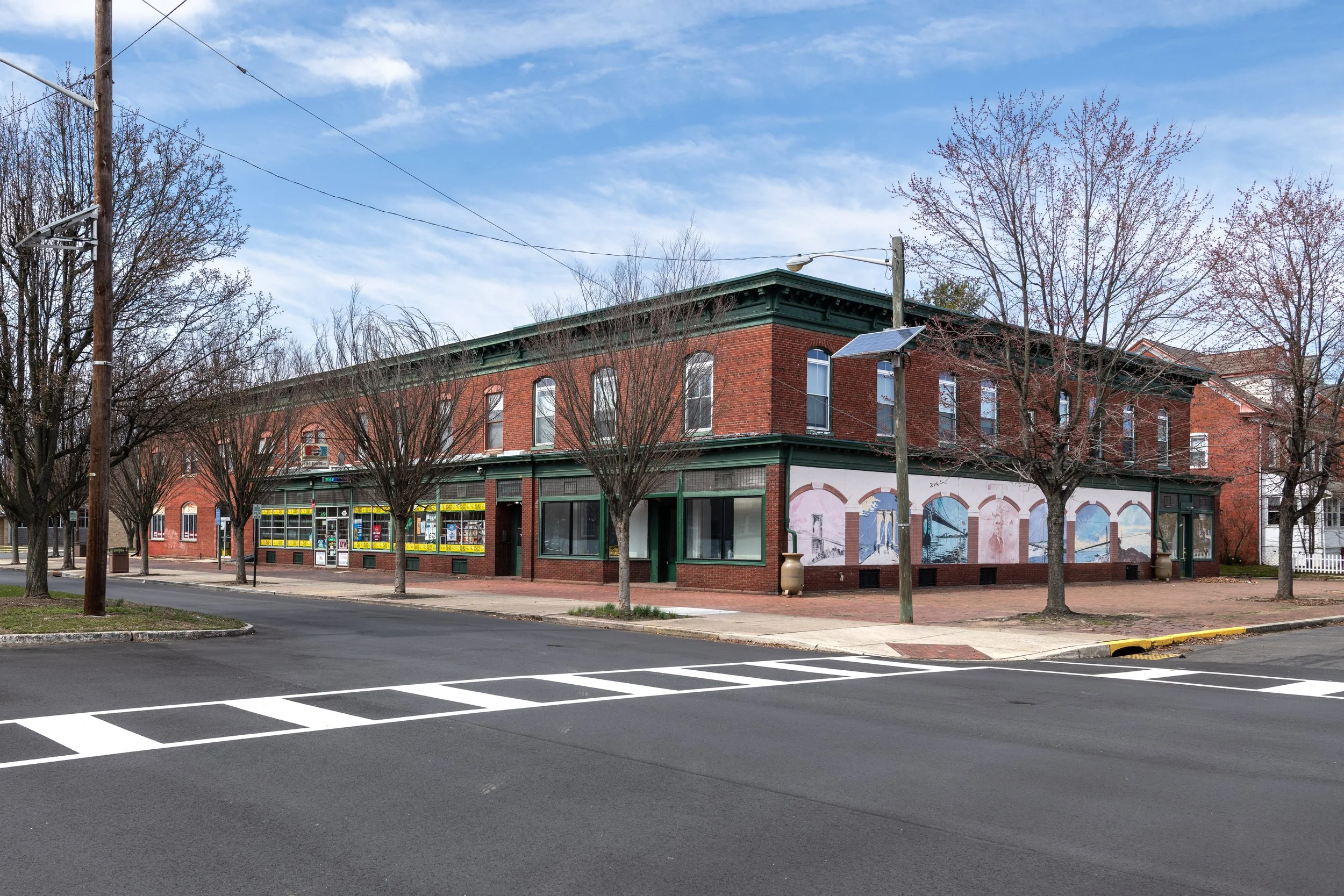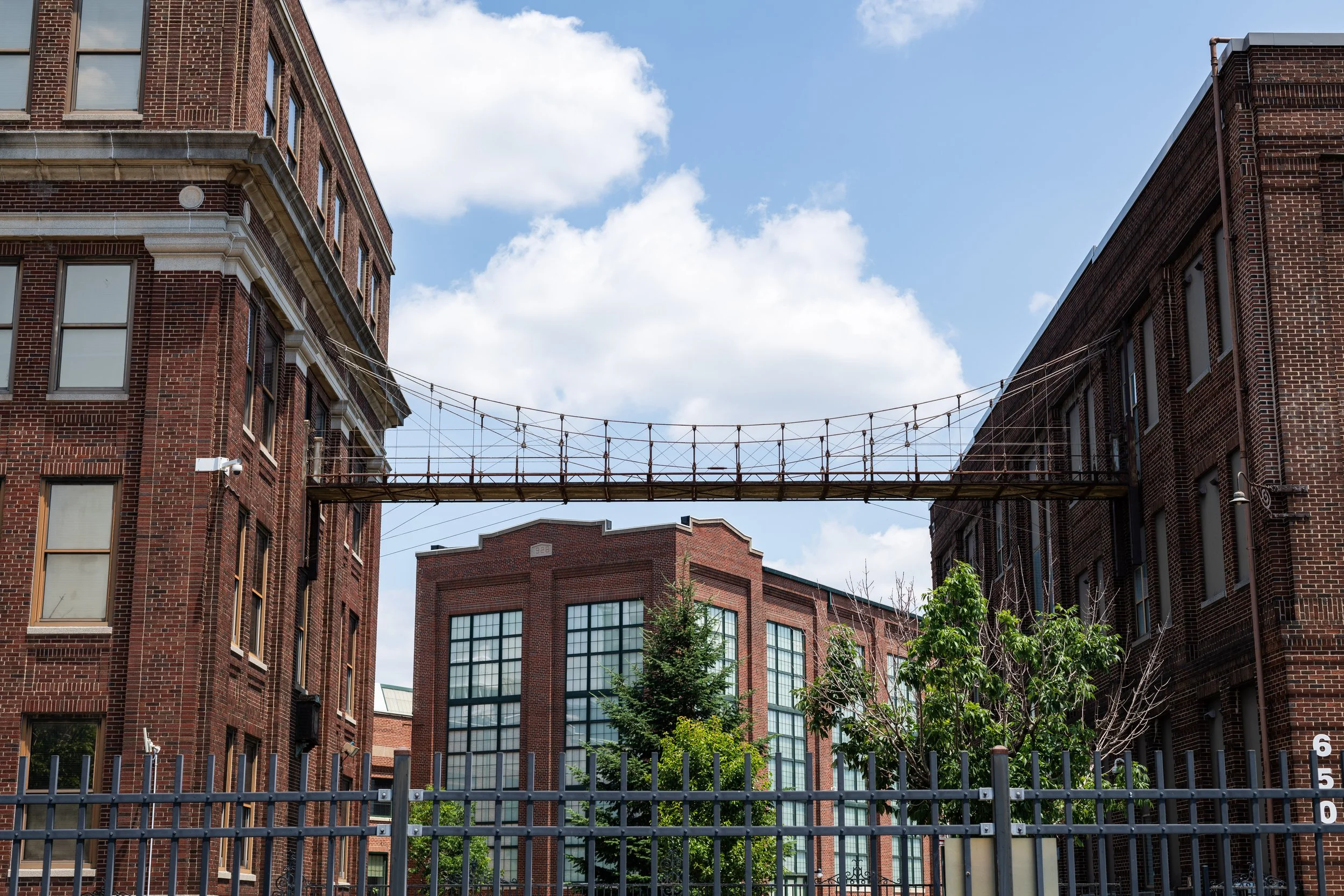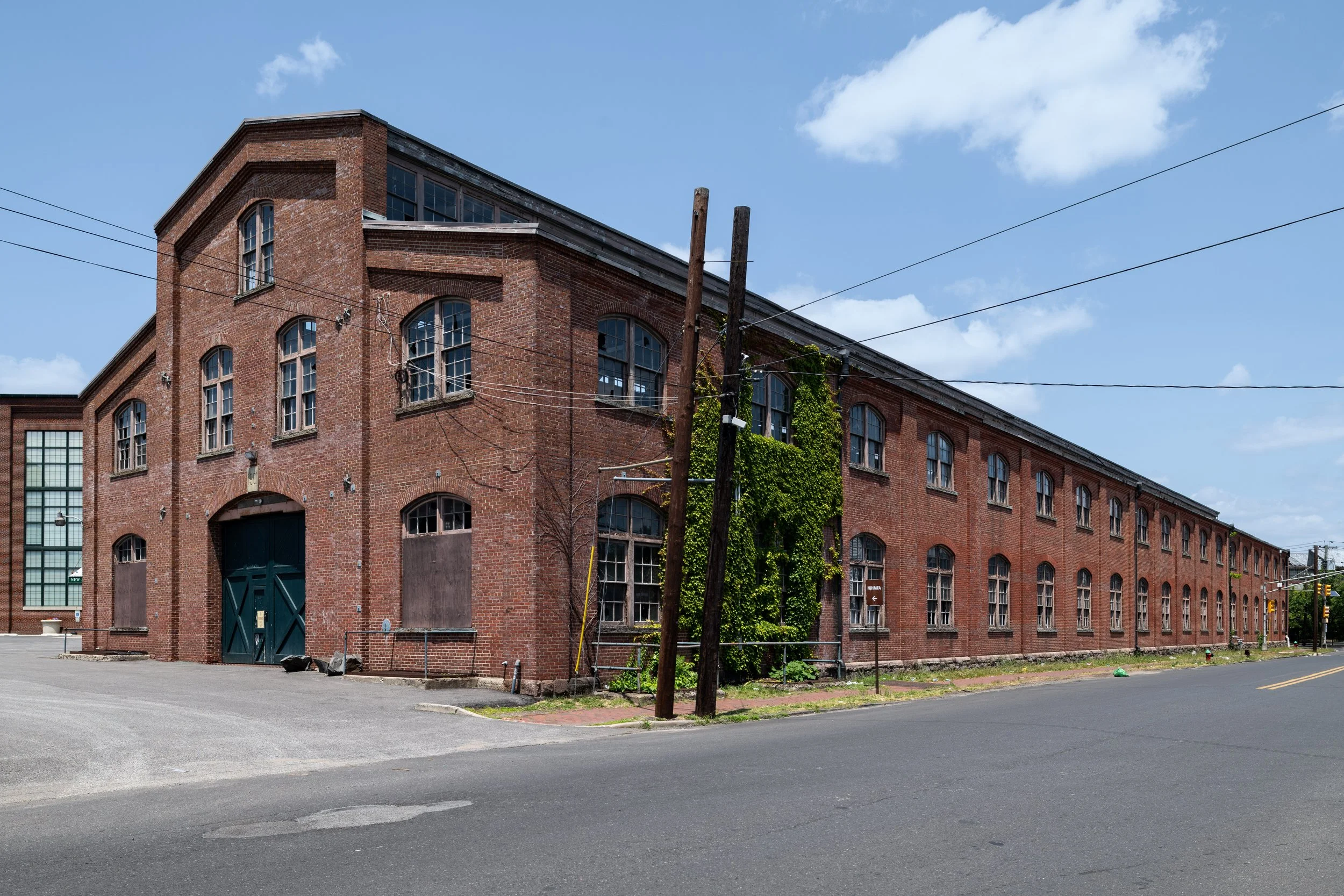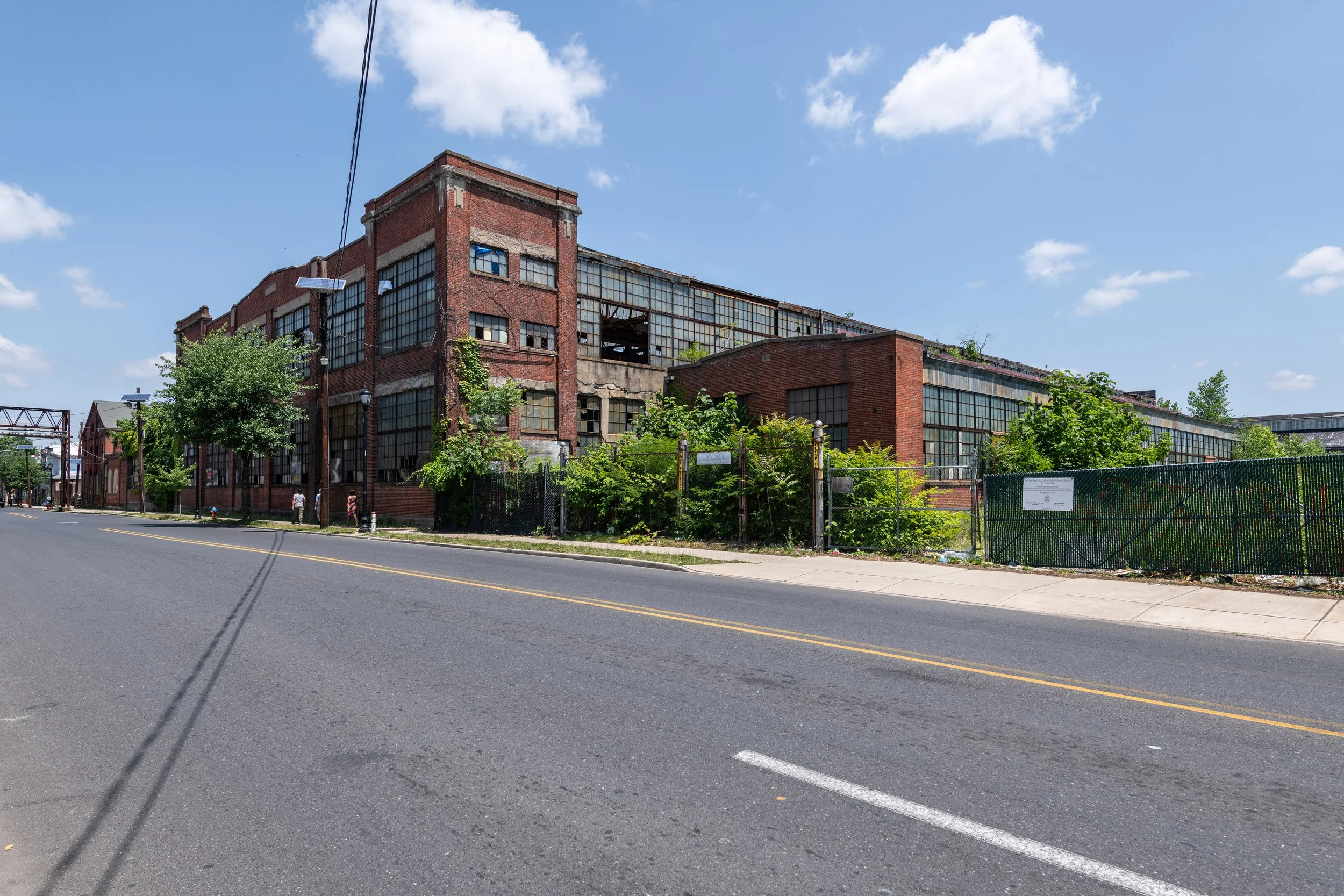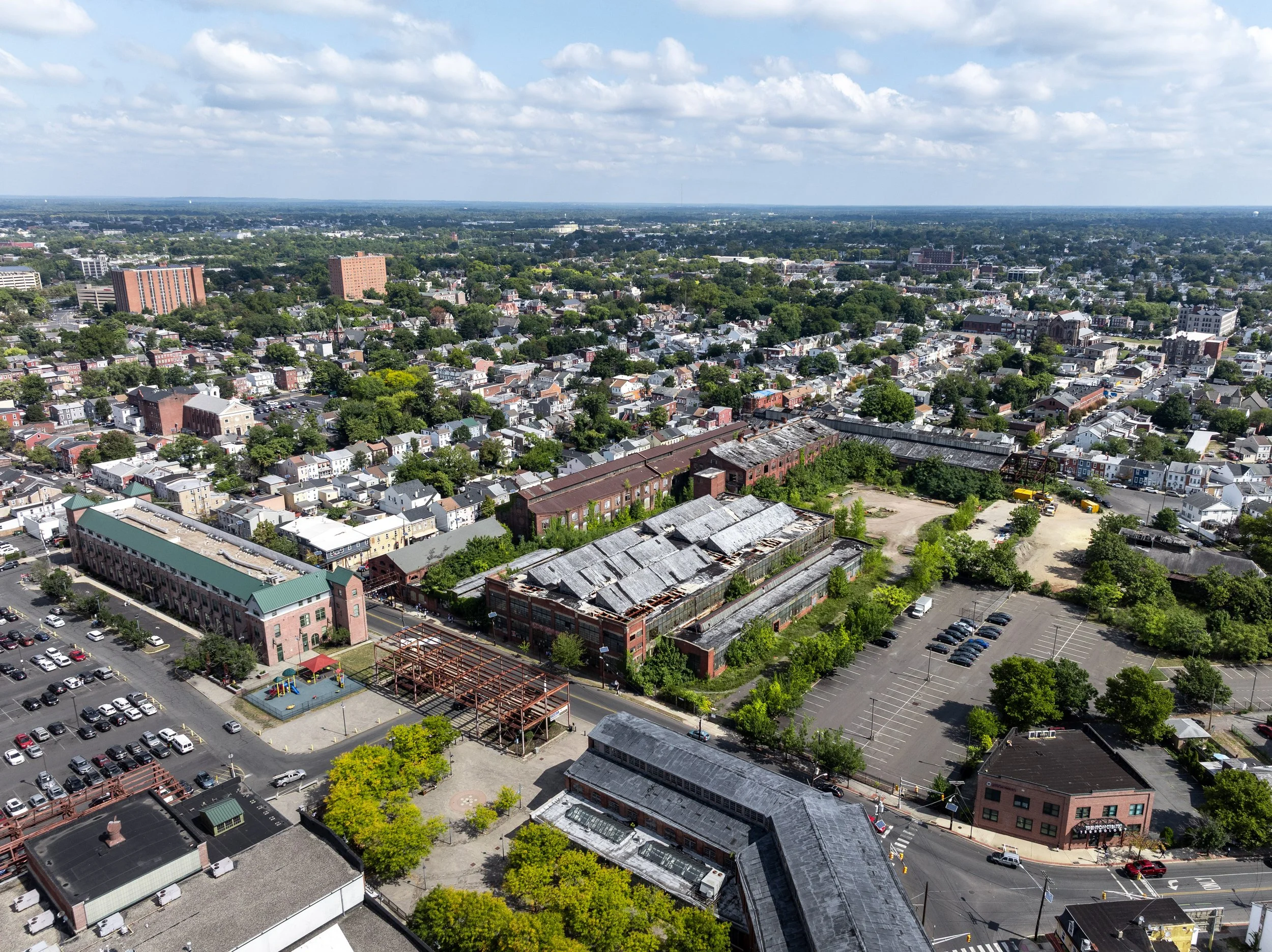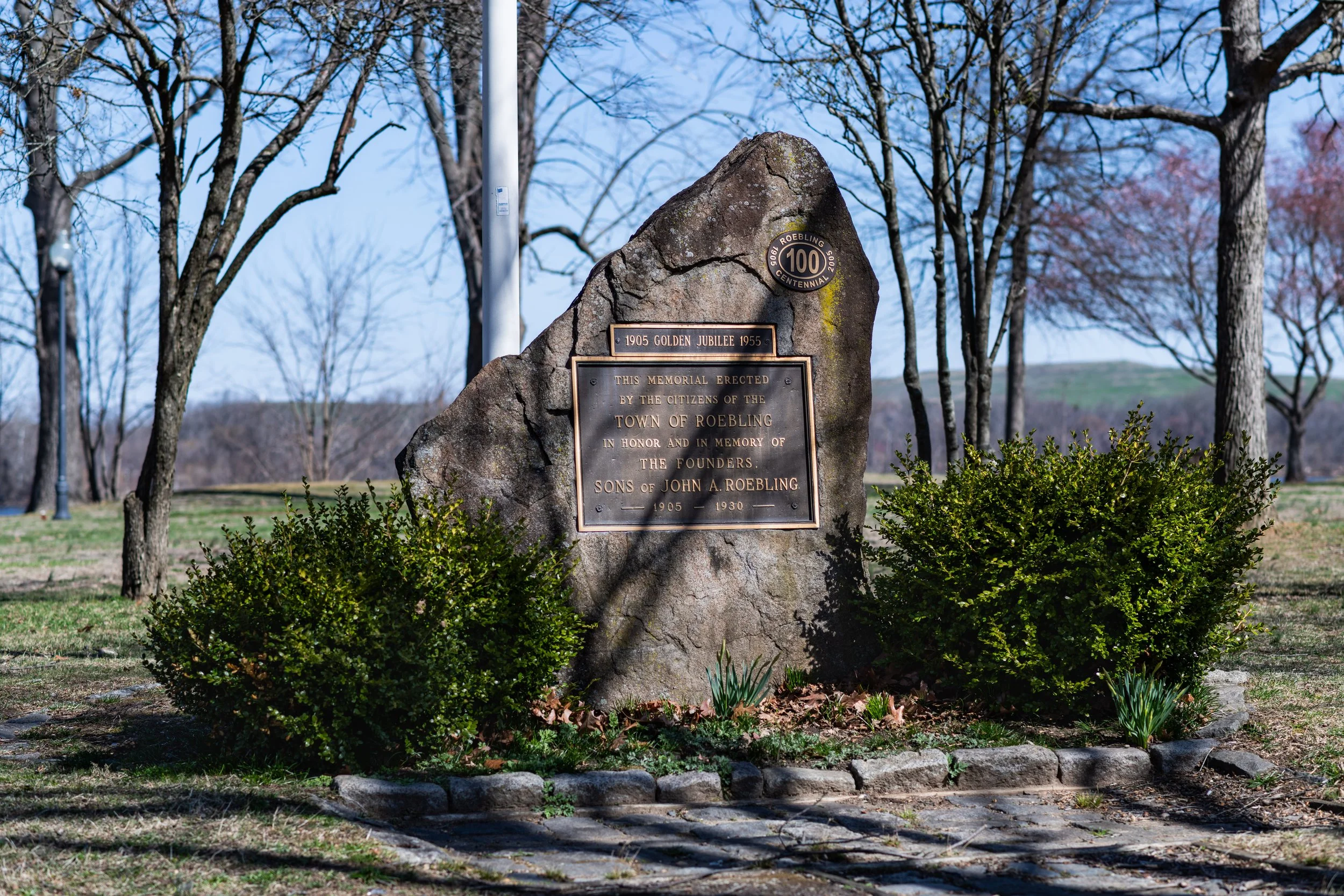Roebling Steel
The story behind the John A. Roebling’s Sons Company and its impact on New Jersey and the world.
Like most other projects of mine, the inspiration to research and photograph what remains of the John A. Roebling’s Sons Company came to me while on a completely unrelated adventure. I was visiting extended family in Cincinnati, OH when I had a free evening to myself with clear weather. I started sifting through the National Historic Register for the Cincinnati area, looking for something to shoot, when I saw the John A. Roebling Suspension Bridge and had an “ah-ha!” moment. I instantly recognized it as the older brother of the Brooklyn Bridge, something I had read about years before. As luck would have it, I already had my D850 and tilt-shift lenses with me to shoot the Cincinnati Union Terminal. This project would take me across the country from Cincinnati to Pennsylvania, New York City, New Jersey, Maine, and California as I documented the factories where Roebling’s wire rope was milled and the bridges it was used to construct.
1867 | Cincinnati-Covington Bridge (Ohio & Kentucky)
The John A. Roebling Suspension Bridge, previously known as the Cincinnati-Covington Bridge, was completed by John A. Roebling in 1867. It was the world’s largest suspension bridge at the time and was built to expedite travel between Cincinnati, OH and Covington, KY. Ferry traffic on the Ohio River reached its saturation point by the 1840s and a suspension bridge seemed like the best solution: the Ohio River would remain navigable with 100’ of overhead clearance while both carriages and pedestrians would benefit from a quicker overland route between the two cities.
Funding was organized and construction on the bridge foundations started in 1856. A financial panic in 1857 derailed the work, but outbreak of the Civil War and threats of an attack from Kentucky made the bridge’s strategic value clear. What I found interesting about the John A. Roebling Suspension Bridge is that its wire cables were sourced from an English manufacturer. Roebling’s success as a company came from vertical integration of the bridge building process: engineering done in-house, steel forged at the Kinkora Works, and wire rope milled in Roebling and Trenton, NJ. The Trenton factories didn’t have the capacity to supply the project, and complications stemming from the Union war effort drove him to an outside source of wire rope. A statue of J. A. Roebling, arm outstretched with a copy of his designs in hand, stands near the Covington bridge approach today.
J. A. Roebling’s next project would be the famous Brooklyn Bridge in New York City, but he wouldn’t live to see its completion. I’ll explain that debacle when we dive deeper into his life in a later section, but know for now that control of the company passed to his children as the John A. Roebling’s Sons Company.
1848 | Lackawaxen Aqueduct Bridge (Pennsylvania & New Jersey)
Roebling’s oldest extant commission was not a typical suspension bridge but an aqueduct over the Delaware River. I was confused by the Lackawaxen Aqueduct Bridge when I first read about it - a bridge designed to carry a canal? It makes more sense if you think about the primary traffic on the Delaware River in the 1840s. The slow, lumbering barges loaded down with anthracite coal that operated on the Delaware and Hudson canal were forced to cross the treacherous Delaware River along their journey from rural Pennsylvania to New York City. A rope ferry in Lackawaxen formed a bottleneck in the system, and a decision to bypass the river with an aqueduct was made by the D&H Canal Company.
The project cost $60,000 for two aqueducts and construction commenced in 1847 after J. A. Roebling’s design was approved by the D&H Canal Company. The aqueducts served their intended purpose until the canal ceased operation in 1898. The surviving aqueduct was then converted to a toll bridge before the National Park Service acquired it in 1980. The bridge’s appearance was restored by the National Park Service according to Roebling’s plans and exists today as the oldest suspension bridge still standing in North America.
Remember how I mentioned that J. A. Roebling’s company continued as the John A. Roebling’s Sons Company, hereafter referred to as “JARSCO”, after his death? The next two bridges I visited were the first I saw in-person which J. A. Roebling had no direct involvement in. The Riegelsville Bridge, built in 1903, spans the Delaware River between Riegelsville, PA and Phillipsburg, NJ. There’s a 3 ton weight limit on the bridge today, but you can still drive across it.
1856 (Refurbished 1947) & 1903 | Lumberville & Rieglesville Bridges (Pennsylvania & New Jersey)
The Lumberville Bridge, built in 1856, was reconstructed by JARSC using the original piers in 1947 and replaced the dilapidated car-carrying structure with a pedestrian bridge. Id’d actually been to this bridge before without realizing its history - when I was in Boy Scouts, we did a few canoe trips where we camped out at Bull’s Island State Park on the NJ side. I remember crossing the bridge to the PA side to grab a drink from the Lumberville General Store after we’d set up our tents. NJ closed the campground 2011 after a fallen tree struck and killed a camper sleeping in his tent, so I must’ve been there sometime before that event.
1883 | Brooklyn Bridge (New York)
Easily the most famous project of J. A. Roebling’s career, the Brooklyn Bridge is an unmistakable sight and an iconic part of the New York City skyline. The New York Bridge Company was formed in 1867 and appointed J. A. Roebling as the chief engineer of the project which would connect Brooklyn and Manhattan via road and rail. J. A. Roebling was surveying for the foundations of the bridge in July 1869 when a ferry boat crushed one of his feet against two piers. He refused to have his foot amputated and tetanus took hold, leading to his death at the age of 63.
His son, Warren Roebling, took over as chief engineer of the project but was struck with a case of the bends while working in a caisson for the bridge’s foundation. His health deteriorated but he was able to finish the project in absentia by working through his wife, Emily Warren Roebling. Emily would be the first to officially cross the bridge on May 24, 1883. The bridge used a mix of Roebling-manufactured and outside cable.
1903 & 1909 | Williamsburg Bridge & Manhattan Bridge (New York)
With the success of the Brooklyn Bridge, New York City was ready to construct another bridge over the East River. Washington Roebling was the sole bidder on the project and received a contract in 1899 to furnish the bridge cables at a cost of $1.4 million. The cables on this bridge suffered from corrosion damage as the city insisted on using a mixture of graphite and oil instead of the usual galvanization process. This cost-cutting measure would require replacement of the cables in the 1980s and 90s.
Cables for the Manhattan Bridge were also manufactured by JARSC, but galvanized like those used on the Brooklyn Bridge. These cables still support the bridge today. Both the Williamsburg and Manhattan bridges carry road, subway, and pedestrian traffic.
1937 | Golden Gate Bridge (California)
The Golden Gate Bridge is another example of a project where JARSC provided cable for the bridge spans but was not otherwise involved in the construction process. Over 80,000 miles of galvanized wire, or 27,572 strands per main suspension cable, were needed to span the approximately 1.2 miles of suspended decking.
1892 | Androscoggin Swinging Bridge (Maine)
Spanning the Androscoggin River in Maine, the Androscoggin Swinging Bridge was commissioned to connect the newly developing community of Topsham Heights with the textile mills in Brunswick, Maine. The bridge was overhauled in 2006 when it was designated a Historic Civil Engineering Landmark. The slight bouncing feel you get as you walk across the bridge reminds me of the Lumberville Bridge.
The First Roebling Wire Rope
So how did John Augustus Roebling find himself in the bridge building business? He wasn’t the first to design a suspension bridge or the invent wire rope. J. A. Roebling moved to the United States from Prussia in 1831 and founded the town of Saxonburg, Pennsylvania. Roebling did everything he could to found a successful farming town and convince those he left behind in Prussia to join him. He quickly lost interest in farming and instead turned back to engineering, a subject which he’d studied in Berlin. Roebling saw an opportunity for innovation while working for the Pennsylvania Division of Public Works - the Allegheny Portage Railroad, which used a series of inclined plains to transport canal boats on railcars over the Allegheny Mountains, relied on stationary steam engines and Kentucky hemp ropes. This rope would last an average of 8-12 months and cost upwards of $3,000 to replace when it wore out.
Roebling recalled reading about wire rope in an article and set out to make his own in Saxonburg. The close proximity of Saxonburg to the Pennsylvania Main Line Canal gave Roebling access to materials he needed to experiment with wire rope production. He constructed an improvised rope walk on his property in 1841 and began to perfect the process of drawing wire and winding it into rope. He eventually produced a wire rope that lasted 4x longer than the Kentucky hemp rope it replaced, and the State of Pennsylvania made the switch.
A number of structures are preserved as part of the Allegheny Portage Railroad National Historic Site which relate to Roebling’s story. Engine House #6, which contains a reconstruction of the equipment used to haul canal boats up the inclines, and the Lemon House Tavern, which was a popular stop for travelers along the canal and railroad, are both managed by the NPS and open for tours. Roebling’s workshop is preserved at the Saxonburg Museum, which is well worth a visit if you’re in the Pittsburgh area. Another early Robeling relic is the aptly named "Shaky Bridge”, built as a demonstration of suspension bridge technology and gifted to the city of Trenton. It stands adjacent to the Trenton Water Works Filtration plant, spanning what was once a runoff weir for the D&R canal.
Shakey Bridge | Trenton, NJ
Roebling’s Kinkora Works
Bldg. 1 | Roebling Plant Main Gate House
J. A. Roebling’s success with the Allegheny Portage Railroad and D&H Canal projects outstripped the infrastructure available to him in Saxonburg. He knew he’d need to establish operations closer to the industrial centers of Philadelphia and New York City if he wanted to compete for larger contracts and continue to grow his wire rope business. As a result, JARSC established the “Kinkora Works” in the village of Kinkora, NJ in 1904 and factories to the north in Trenton, NJ. The site was chosen for its easy access to fresh water, frontage to the Delaware River, its connection to the Pennsylvania Railroad via a spur line, and proximity to foundries just across the river.
Making wire rope was a resource-intensive process. Ore was melted in furnaces at about 3500º and poured into moulds to make 14’ x 5’ ingots or iron. The ingots were heated and compressed to 48’ in length, then cut into billets and rolled into rods. Rods would then be drawn out to the final diameter of wire desired. Wire would be twisted into strands on a rope walk, which would then be combined into a cable. Kinkora Works gave JARSC the capacity to produce their own steel away from the now cramped Trenton factory complex. Consolidation by US Steel and the unreliability of European wire suppliers proved J. A. Roebling’s investment in the Kinkora Works to be a sound one.
General Electric 50 Ton Locomotive
Letourneau Loader
Vertical integration of the wire rope making process allowed JARSC to stay competitive when most others folded, and they even declined a buyout from US Steel in 1898. Master plans for the Kinkora Works left room for expansion, which proved a prudent planning choice as WWI loomed overhead. Buildings on the site doubled during WWI as the demand for wire rope to be used on ships, in electrical communication, and for wire nets to protect harbors from mine-laying submarines outstripped supply.
Bldg. 47/48 | IBM Time Card Racks
Kinkora Works unionized in 1941 and increased wages in the 1950s made steel production a less attractive endeavor for JARSC. The Roebling family gave up control of JARSC to Colorado Fuel and Iron in 1952, who then sold to Crane Corporation in 1968. Amid falling demand, operations at the Kinkora Works were shuttered in 1974. A lack of investment had made the plant too costly to upgrade and unattractive to potential buyers. With no buyer willing to foot the bill for the steel and blooming mill upgrades, demolition on the plant started in the 1980s when the federal government declared it a Superfund site. Extant structures include the Main Gate House which is now a museum, the Time Office, and the Rope Measuring Buildings. A collection of equipment that was left behind by Crane Corporation is maintained by the Roebling Museum.
Bldg. 92 | Rope Measuring Building
A Company Town | Roebling, NJ
Semi-Detatched Housing Unit
There was nothing in the area when JARSC started construction on Kinkora Works in 1904, and the lack of accommodations for the workmen necessitated the construction of a village. The Pennsylvania Railroad renamed their Kinkora station to Roebling after the factories were developed, and the name stuck. Plans were drawn up for a village of 750 houses and supporting facilities including a post office, bank, bakery, hotel, drug store, barber shop, hospital, and jail. JARSC had no choice but to build housing as the 11-mile commute from Trenton was too inconvenient for its workers. A 900-seat auditorium, complete with a stage curtain featuring the Brooklyn Bridge, provided entertainment to the community. The first structure to be completed, the tavern, served alcohol. This was unusual for a company town, but the Roebling believed their workers should be allowed to drink if it didn’t impact their on-the-job performance. A number of bars eventually sprung up across the railroad tracks to meet demand.
There were multiple types of houses available. In 1908, a family could expect to pay:
$8.50/month for row houses closest to the plant. These were built in blocks of 10 with 4 rooms in each residence. Row houses were furnished with gas lighting, coal for heat, running water, and indoor plumbing.
$10.50/month for to-story semi-detached housing with 4 to 6 rooms in each residence. These would be reserved for skilled steelworkers and were furnished with electric lighting and laundry in the basement.
$25/month for detached houses along River Avenue. These were for the company executives and featured 11 rooms.
Water, sewer, and electricity were included with the rent and hooked into the plant. Crews would wallpaper and paint the residences every 3 years, and those I spoke to in Roebling who grew up there indicated that the company took good care of the residences. JARSC aimed for a 4% return on investment. Rents were about half the average of comparable accommodations in Trenton, which put Roebling residents at an advantage since pay was the same between factories. Construction of the village was finished in 1921, but only could house 40% of the workforce.
Different ethnic groups concentrated themselves on certain streets in Roebling. Hungarians, who often had the lowest-paying jobs, lived in the noisiest but least-expensive row houses that sat closest to the mill through 4th Ave. Swedes, English, Irish, and Germans lived on 5th through 8th Ave. If you look closely at the streets of Roebling today, you’ll probably notice the white-painted concrete posts embossed with the phrase “PRIVATE PROPERTY”. JARSC would chain off the streets one day per year to assert their ownership of the village.
After 40 years of ownership, JARSC moved to sell off the town on January 1, 1947. It had lost the company money for 28 years as they were unable to raise rents. Preference was given to present tenants, then Roebling employees, and finally WWII veterans. While walking around the town taking pictures, I actually had some conversations with folks whose parents bought their house from JARSC in 1947.
Roebling’s Former General Store, Bakery, Pharmacy, Cobbler, and Barber Shop Complex
The Trenton Factories | Trenton, NJ
While Roebling, NJ contains the most visible remains of JARSC today, the Trenton factories is really where it all started. Spread out across the “Upper Works” near Clinton Street and “Lower Works” near Lalor Street, the earlier factories established by J. A. Roebling remain today in decrepit condition. Some have been restored and repurposed into loft-style housing or turned into municipal office space. J. A. Roebling purchased land in 1848 and expanded the Trenton factories again in 1860.
More than just bridge cable was made at the Upper and Lower Works in Trenton. The New Jersey Wire Cloth Company produced a fine wire mesh used to refine wheat and served as an outlet for surplus wire. Other products like galvanized telegraph wire, underwater telegraph cable, and streetcar wire were made in Trenton. In fact, J. A. Roebling’s wire rope was used to lay the first underwater transatlantic telegraph cables in the 1850s. The fine wire produced in Trenton was of such quality that it was even used to rig the control surfaces of Charles Lindbergh’s airplane.
Bldg. 1A & 5 | Circa 1930 Test Suspension Bridge (between Administration and Research Laboratory)
My favorite set of buildings in the Upper Works is the Administration and Research Laboratory. Not only have they been beautifully restored by the State of New Jersey, but they retained the model of the San Marcos Bridge that was strung between the buildings.
Bldg. 144 | Elmer Street Rope Shop
Bldg. 7 | Machine Shop
As JARSC continued to grow, so did their Trenton factories. The Elmer Street rope shop was built for elevator rope production. The Clinton Street Wire Mill produced cables for the Williamsburg Bridge. Electrical wire was produced at the Buckthorne Plant. The last spool of wire rope to leave Trenton rolled out of the factory in 1988.
Bldg. 53 | Flat Shop No. 3A
The first electric generating station using steam-driven dynamos was built on the corner of Mott and Clinton Streets. As space ran out at the Upper Works, the Lower Works was established around Lalor Street in 1902. As was common in the early 1900s, a series of devastating fires struck various buildings:
February 5, 1908 | The Elmer Street Rope Shop burned, and the structure was under-insured by $200,000.
December 2, 1911 | The Mott Street Flat Rolling Mill burned. $50,000 of equipment was lost.
November 11, 1915 - A fire started in a hemp storage area at the Elmer Street Rope Shop annex. The fire was rumored to be intentional as the alarm systems were cut. Some suspected the arson possibly stemmed from a machinists strike that occurred one year earlier.
January 18, 1918 | The Lower Works went up in flames. Great quantities of lead and tin that melted into the basement had to be salvaged, and $2 million in damages was caused. Despite salvaging eh valuable metals from the basement, JARSC was unable to produce the quantities of insulated wire ordered for WWI.
Aerial View of the Trenton Factory Complex
A Lasting Legacy
John A. Roebling Statue | Caldwater Park, Trenton NJ
The iconic Brooklyn Bridge and the lesser-known Lackawaxen Aqueduct Bridge, designed and built by J. A. Roebling, remain as testaments to Roebling’s engineering abilities and the quality of wire rope manufactured in Trenton and Roebling, NJ. This project, started in 2023, followed me across the country from Maine to San Francisco. I wandered the streets of Roebling, peeped through shattered windows into the abandoned factories of Trenton, and stood inside the original workshop in Saxonburg, PA where J. A. Roebling perfected his wire rope making process. While the John A. Roebling’s Sons Company is long-gone, the factories, towns, and infrastructure it built are haunting reminders of America’s industrial past.
Town of Roebling Monument (1930, 1955, & 2005) | Roebling, NJ



